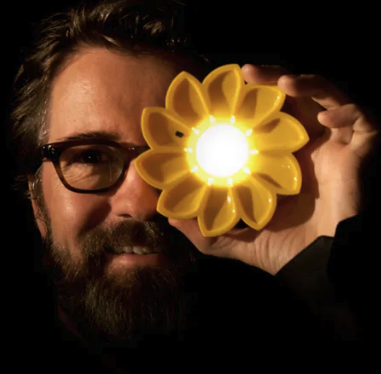Transdisciplinarity and Wicked Social Problems
This lesson explores the concept of transdisciplinarity through the work of Olafur Eliasson, whose art integrates science, ecology, and social engagement. Students will analyze how his projects address complex, "wicked" social problems—issues that are difficult to solve due to their interconnected nature. The session culminates in a collaborative creative response to a contemporary social challenge.
Learning Objectives
By the end of the session, students will:
Understand transdisciplinarity as a method for addressing complex social issues.
Analyze how Eliasson’s work engages with environmental, social, and political themes.
Apply artistic and interdisciplinary thinking to propose creative solutions to a wicked problem.
Reflect on how art can function as activism and social change.
Lesson Outline
1. Introduction (15 mins) – What is Transdisciplinarity?
Define transdisciplinarity and its role in tackling interconnected issues.
Brief discussion on wicked problems (e.g., climate change, inequality, migration).
Show examples of Eliasson’s work (The Weather Project, Little Sun, Ice Watch) and discuss their social and environmental impact.
2. Critical Discussion (20 mins) – Art as Social Action
How does Eliasson use collaboration (with scientists, engineers, and activists) to expand the role of art?
Case study: Little Sun—how does this project combine art, technology, and sustainability?
More on the Little Sun project
What are the strengths and challenges of using art to solve social problems?
3. Creative Workshop (40 mins) – Designing a Transdisciplinary Response
Prompt: “Choose a wicked problem (e.g., climate justice, refugee crises, urban inequality) and develop an interdisciplinary creative solution inspired by Eliasson’s methods.”
Students work in small groups to design an artistic intervention, installation, or social campaign.
Emphasize using light, space, and perception as tools for engagement, drawing from Eliasson’s practice.
4. Reflection & Presentation (15 mins)
Groups present their concepts and receive peer feedback.
Discussion: How can transdisciplinary collaboration be applied beyond art?
What role should artists play in addressing urgent social issues?
Assessment & Follow-Up
Formative: Students write a short reflective piece on how transdisciplinarity could reshape education or policymaking.
Extension: Propose a collaborative project with other disciplines (e.g., science, geography, engineering) to explore solutions further.


The Weather Project, Olafur Eliasson, 2004
Olafur Eliasson and his 'Little Sun' lamp


